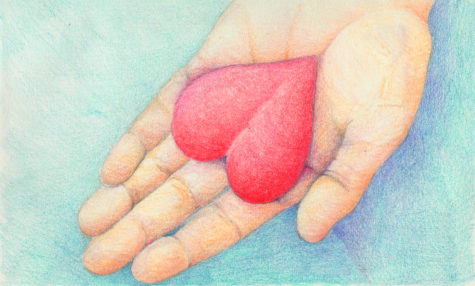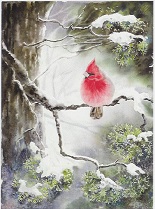Level 1 Reiki
Level One Reiki
This post serves as a Table of Contents for all of the information I provided in my Reiki 1st degree class manual. I also thought that if you have just received your Reiki 1 Attunement, it might be helpful to read the information in an orderly fashion.
- The Reiki Symbol
- Reiki – The Short Explanation
- Rei Ki – What The Words Mean
- What Is Reiki?
- How Reiki Works
- Kirlian Photographs
- The Advantages of Reiki
- The History of Reiki
- About Dr. Chujiro Hayashi
- Reiki Comes To The West
- The Original 22
- The Evolution of Reiki
- My Lineage
- The Reiki Attunements
- The 21 Day Cleansing Process
- Coping With The Cleansing
- The Five Principles of Reiki
- Reiki Ideals
- Gassho Meiso
- Joshin Kokyuu-ho
- Activating The Reiki
- Exploring The Reiki Energy
- Reiki For Yourself
- Hand Positions For Treating Yourself
- How To Amplify The Reiki
- The Seven Chakras
- Reiki Prayers
- Reiji-ho and Chiryo
- Preparing For A Reiki Treatment
- Giving A Complete Reiki Treatment
- Treatment Guidelines
- Gedoku-ho
- Exploring The Hand Positions
- Hand Positions For Treating Others
- Dr Usui’s Original Hand Positions
- Feeling The Flow of Reiki
- Advantages Of A Whole Body Treatment
- Kenyoku-ho
- Code of Ethics
- Reiki For Animals
- Reiki For Everything
- Reiki Mawashi
- Shu Chu Reiki
- In Closing
- Recommended Reading
In Closing
These are some closing thoughts that I included in my first degree Reiki class handouts.
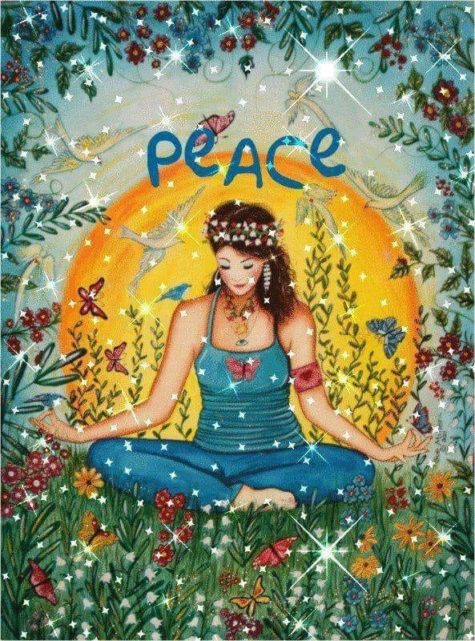
My friends there is nothing out side of you that can give you what you want. Reiki is a tool, a pointer to the way. Use it or not. But do not expect it to do the work for you, no one can heal you but yourself.
Reiki is in the simple. Reiki is not so much something we do, it is something we are. In the moment, as the expression of what it is, as love, compassion and kindness we reach out, we touch, we heal. In the moment when you stretch out your hand to heal where there is no self, no other, you “are” Reiki.
Enlightenment is where you are, where else could it be? Usui’s Reiki is one of many, many ways of seeing the truth, and that is healing. This is Reiki. Reiki can heal, can relieve pain, but don’t expect Reiki to do the work of removing the conditionings that veil awakening. Attunements do not equal enlightenment. Removing your suffering is up to you.
Your Reiki will be an expression of you, of your life, your BEing, and it will reflect the oneness and connectedness with all that you are. BEing Reiki is to BE the essence that is healing.
And so in closing, I leave you with this. Simply place your hands together in Gassho, and say these words. For day only, anger not, worry not. Be grateful and humble. Be kind to all. Be mindful and live these. Place your hands on self or other and let go. Let go of outcome, of worry, of conditionings, of need, and simply be. The rest takes care of itself.
May this be of benefit.
~Vinny Amador
Shu Chu-Reiki
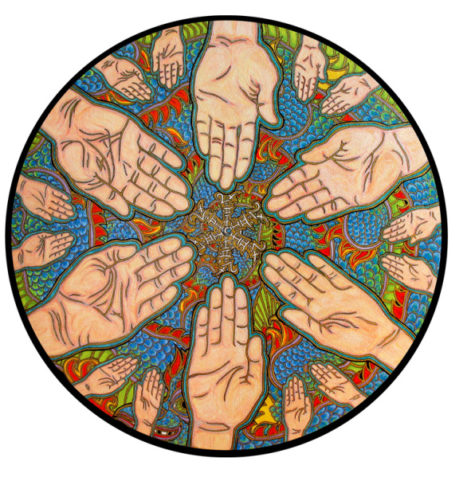
Shu Chu-Reiki is a concentrated Reiki group exercise. The Japanese word shu chu means “concentrated.” All group members give energy to one group member while wishing and praying for that person’s happiness and health. This can be a very intense experience, so use common sense when choosing the recipient.
Here’s how:
In a small group each person lays hands on the recipient, and begins the flow of Reiki along with the prayers and wishes for that person. Do it for 1 to 3 minutes per person.
Another way to do this is to form a human “chain” or circle. The first person touches the recipient directly, and the rest of the group forms a circle, or “chain.” Hands are placed on the shoulders of the person in front (and so on until each person is connected hands to shoulders).
The Reiki is then channeled through the “chain”. The energy flows and surges through every one participating in the healing and finally reaches the “patient.” A wonderful experience for all involved.
For my sources see: Recommended Reading
Reiki Mawashi
Reiki current ~ Group exercise.
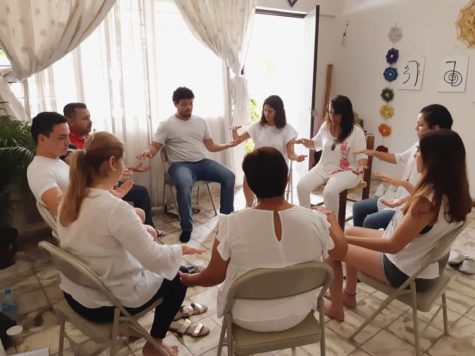
The Japanese word mawashi means current. In this exercise a current of Reiki energy is passed through a group of practitioners. The energy of a group often exceeds the sum of the energy of the participants, and spontaneous healing at all levels may occur. You can practice this exercise for 10 or 15 minutes.
Here’s how it works:
Sit in a circle, and hold your hands a few inches above / below the hands of your neighbors ~ so that the left hand extends to the neighbor on the left, and your right hand extends to the neighbor on your right.
Turn your left hand upward, and your right hand downward.
Begin the flow of energy, sending Reiki to the left.
The recipient receives the energy from his or her right hand, lets it flow through his or her body, and passes it on to the next individual through his or her left hand.
It’s best if the energy flows clockwise “sunwise,” but this is not mandatory. The exercise will work either way.
For my sources see: Recommended Reading
Reiki For Everything

Everything, absolutely everything is made of energy. And Reiki has a harmonizing healing effect where ever it is used. So do not hesitate to use Reiki for anything and everything.
Healing Plants
Depending on their size, plants require varying degrees of Reiki. Treat seeds for about 2 to 3 minutes, houseplants 5 to 10 minutes. By placing your hands on the truck, you can treat a very large tree with Reiki, be prepared that this make take a while. With second degree Reiki, you can treat whole forests or eco-systems, which is very cool!
One of the easiest ways to treat plants with Reiki is to charge the water before feeding it to the plants. It is a good idea to treat the roots of houseplants as well as the leaves. This will ensure prevention of diseases such as root rot. It also helps the plant to grow strong new roots.
If you have a large garden, you can drop bubbles of Reiki over specific plants. With second degree Reiki, you can send Reiki to your garden, and also to all the beneficial insects that visit.
Whenever you bring home a potted plant it is a good idea to spend some time with it sending Reiki into the root system and watering it with Reiki charged water. Plants that have been warehoused in stores do not often receive proper care. Plants and seedlings bought from a nursery might have some stress moving from an optimum environment to someplace completely different. In either case, the Reiki energy will give each plant a nice boost as they adjust to the new home.
Energizing Your Food
With Reiki you can improve the quality of your food. Give Reiki to your food as you prepare it. Simply hold it in your hands and allow the Reiki to flow into it. Alternatively, you can give Reiki to food once it is on the plate.
This method can also be used when eating out, as you can energize your food by discreetly holding your hands at either side of your plate, palms facing in, rather than above it. This same method can be used with water and other beverages.
Mechanical Reiki
Yes, you can use Reiki on machines! I have used it to recharge dead batteries, and to keep an elderly vehicle running. I channeled Reiki into my computer one day when it was freezing up every five minutes, and while it did not do anything for the computer, the solution to the problem came to me as I was channeling the Reiki.
I know people who have used Reiki to keep clothes dryers running, dishwashers leak free, and a number of other things.
Other Reiki Ideas
Try charging letters, and the bills that you pay, with Reiki before sending them. Reiki your wallet, and your cash. Infuse your credit and debit cards with Reiki energy and see what effect it has on your finances.
When giving a gift, charge it first with Reiki so that it brings healing energy and positive vibes to the recipient. Reiki your phone before, and during a difficult call, or when talking to a difficult person. You’ll be surprised at how much that helps.
Put Reiki energy into anything you are wanting to sell, and it will attract buyers and bless them at the same time. The ideas are endless.
For my sources see: Recommended Reading
Reiki With Animals
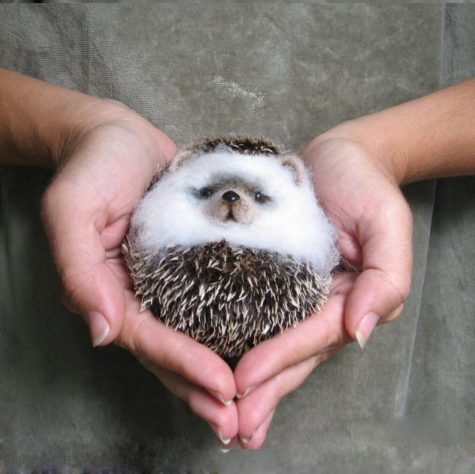
Contrary to popular belief, you do not need a special class in order to use the healing power of Reiki on animals. The techniques vary slightly only because the shapes of animals and their needs are just a little different. What follows are some basic guidelines to help get you started.
Cats
Cats deserve special mention. Cats respond very well to Reiki. They seem to know instantly what it is. Unlike almost any other animal, cats will position themselves precisely under your hands according to exactly where they need the help. Once they realize what you’re doing, their desire to cooperate is instantaneous and their acceptance of the healing is usually total.
When they’re done, they’re done. They’ll move away. And when they want more, they’ll come back. Cats tend to show a bit of attitude about energy work. It’s possible that they think they invented it!
Once in a great while, you will find a cat who believes that she or he is already so perfect that Reiki is non-essential to their well-being. When you work on another human, or animal, however that same cat will be right in the middle of the Reiki treatment soaking up the good energy. It has been an observation that the older the cat, the more they seem to appreciate Reiki.
Dogs
Dogs love Reiki. It works to calm hyperactive dogs and to help rehabilitate abused dogs. Reiki is also wonderful for healing and overall well-being. Dogs tend to return to you once they’ve gotten the idea that you will do the treatments on them. They aren’t nearly as “efficient” about it as cats, although occasionally a dog will also turn an area needing Reiki to your hands.
I generally use the technique of activating the Reiki and then just letting my hands go to the area they feel most drawn to, or to where it seems most comfortable for the dog. I had a little dog with bad knees, and every night I put my hands on whichever knee was closest to me, and sent Reiki until we both fell asleep.
If you want to work with animals, it is helpful to familiarize yourself with breed specific needs. For example, some breeds of dogs, the German Shepard for example, have a history of hip or knee problems, and these areas may require more energy and more time.
Fish
You can either place a “Reiki bubble” around the fish tank, or you can “beam” the fish. The Reiki will pass through anything. You can also place your hands on the aquarium glass. They will stay in the Reiki field for as long as they want the energy and then they’ll move. If you keep your hands in place, you’ll find they will come back, expecting the energy to be there.
Birds
Birds, unless they have been hand raised and are quite used to human contact, do not normally like the restraint of human hands. This can be very stressful for them. For this reason, it usually works best to enfold the bird in a “Reiki bubble” or beam the Reiki directly to them.
You can also place your hands on either side of the cage. They will stay in the Reiki energy for as long as it is comfortable, and then they’ll move.
I once healed a bird with Reiki energy. It crashed into a window at my home and when I ran out to see if it was OK, it was limp, and it’s little head was at a weird angle. I picked it up and immediately the Reiki began to flow. The energy was very intense and strong, and after about five minutes, the little bird stirred, and next thing you know, he seemed just fine. He looked around a little startled, and then flew away.
Small Animals
It is important to remember that most small animals do not enjoy being physically restrained. Make every effort to ensure that the animal is comfortable and feels safe. Small animals can be held loosely in your hands while you allow the Reiki energy to flow.
If they are squirmy or seem uncomfortable with being held, you can hold your hands an inch or two away from them, and send the Reiki that way. Alternatively, you can send the Reiki into their cage or enclosure using a “beam” or “bubble.”
Do not worry if it seems the Reiki flow doesn’t last as long as you would expect when working with a person. Sometimes it doesn’t take much time for a small animal to receive the full benefit of the Reiki energy.
Large Animals
Large animals can be treated by simply activating the Reiki and then allowing your hands to go to whatever areas of the body they are drawn to, or that seem comfortable for the animal.
Beaming the Reiki is also an option, especially if the animal does not seem to enjoy the actual hands on contact.
Reptiles and Other Animals
Any time you are asked or guided to give Reiki to an animal that doesn’t seem to enjoy actual physical contact, use a “beam” of Reiki, or a Reiki bubble. If the animal allows, or seems to enjoy being touched, activate the Reiki energy and then allow your intuition to guide you.
Other Options
Other options for healing animals include infusing their water and food with Reiki energy. Infusing the food with healing Reiki energy is done by holding the food bowl, or food container, and sending the Reiki energy into it with the intention of infusing the food with healing power. Infusing the water with Reiki is done the same way.
Don’t Forget!
Even if the need for Reiki comes up suddenly, and you are treating on the fly, always remember to center yourself first, and open your heart. If you are doing a “full Reiki” treatment, approach it with the same respect and care that you would for a human client or friend.
And remember, just as with humans, respect the animal’s choice. If they reject the Reiki, or try to get away, do not force it.
Also, it’s very important to smooth the aura and cut the ties when complete, just as you would when working with a person.
For my sources see: Recommended Reading
Jyoshin Koki-ho
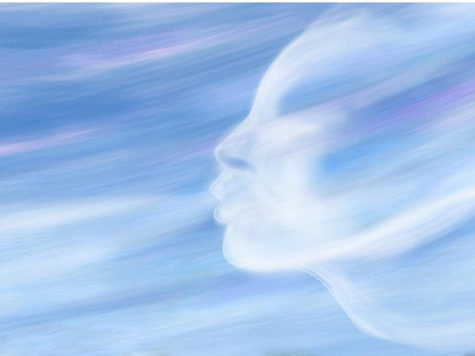
Jyoshin Koki-ho (Joshin Kokyo-ho) is a breathing technique. You breathe Reiki in through the nose through the crown and into the hara on the in breath. You breathe the out breath from the hara.
Jyoshin Kokiho is done to cleanse the spirit, heart and mind. It is a focus meditative breathing technique.
To do Jyoshin:
- Start by placing the hands in Gassho and your eyes closed.
- Breathe in through the nose and out through the mouth.
On the in breath, breathe in the light of Reiki through the crown and into the hara. Let the light fill your body completely transmuting all that is negative and stuck into light. On the out breath, breathe out that light and radiate it from you to all the universe.
For my sources see: Recommended Reading
The Kenyoku Technique
Also known as “dry bathing,” Kenyoku purifies body and soul. It strengthens your energy and helps you to detach from your clients, situations, thoughts, and emotions. It brings you into the present moment. It can be used before and after a Reiki session, and can also be used anytime you feel a need to release negative energy and/or nervous tension.
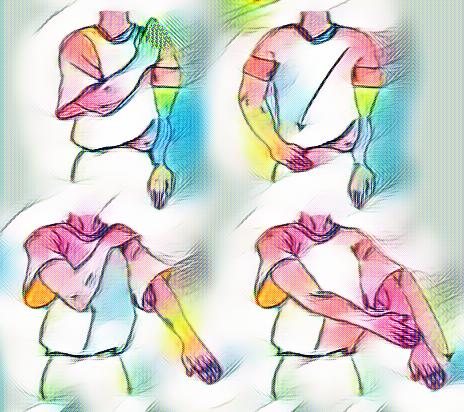
Kenyoku-ho is a technique to clear and strengthen the energy channels. The technique was common to many martial arts and chi kung schools such as JuJitsu, Aikidoand KiKo and was added by Usui.
Those familiar with the martial arts will recognize the two parts of this technique as common techniques. The first is a down block across the midsection (this technique is used in a variety of martial arts such as Karate, Kung Fu, Aikido, etc.). This down block is followed by what is commonly called in the martial arts as a “shirk” or technique to remove an opponents hand from your wrist that is done by sliding the knife edge of your hand down the arm.
Part One:
A. Place your right hand on the left shoulder so that the right fingertips are on the left shoulder. The hand is open, the fingers held together all point upwards. The hand (palm down) is against the body.
B. Slide the hand downward toward the right hip. Move the hand, going across the chest and ending up fingers down at the right hip. The hand (palm down) stays in light contact with the body the entire movement. (This is what is called an open handed down block in the martial arts.)
C. Repeat this process starting with the left hand on the right shoulder and going down to the left hip.
Part Two
D. Place the right hand again on the left shoulder. Slide the right hand down the left arm (inside or outside, each will cover different meridians) all the way to the fingertips. (This is what would be called a “shirk” in the martial arts, used to remove an opponents hand that is grabbing your arm.)
E. Repeat this with the left hand on the right arm.
F. Start with the right hand on the inside of the left elbow, and slide the hand down to the fingertips.
G. Repeat this with the left hand on the right inside of the elbow.
Note – Some masters teach the hand should slide to the inside of the arm and others teach it should slide down the outside of the arm. Different meridians are stimulated for each.
- The inside slide is yin and will effect the lung, heart, and kidney meridians.
- The outside slide is yang and will effect the triple warmer, colon and small intestine meridians.
It is interesting that this technique appears to have survived after a fashion in the Rand school that teaches to cut the cords on the solar plexus using a “karate chopping technique”
For my sources see: Recommended Reading
Dr. Usui’s Original Hand Positions
Usui Shiki Ryoho is the most common form of Reiki in the world. This was Reiki in the Hayashi-Takata line. The 12 positions that Takata taught (varies slightly from system to system) are the set that most practitioners know. You can find them here: Hand Positions ~ Healing Others.
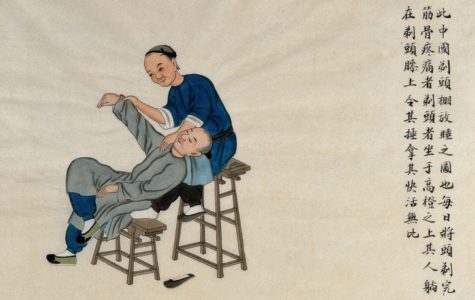
Hands on Healing is the common element to all versions of Reiki. In Japanese this is called “Te-ate” (pronounced “tay-ah-tay”). It would appear in Hayashi’s practices that he had several sets of hand positions at different points in the development of his interpretation of Reiki.
Hayashi Reiki Ryoho appears to have had 7 positions initially. It is a powerful set and follows the large intestine meridian in Traditional Chinese Medicine. It also appears that the set that Mrs. Takata taught was the one used for group treatment with several practitioners in Hayashi’s clinic.
It would appear that Usui either used Reiji and treated where indicated, or used a set of 5 hand positions and then used Reiji. Reiji is the ability of the Reiki practitioner to allow their hands to move or be drawn to the area of that body that needs healing.
Mrs. Takata also taught this technique of Reiji, teaching that we must notice the sensations in the hands and let them move. This happens as the hands become more sensitive with practice and as intuition develops. (Read how to do it here: Reiji-Ho and Chiryo.)
Reiji and Byosen Reikian-ho (focused healing method) were skills that were expected to be developed at Shoden (level I) before Okuden (level II) would be offered to the student.
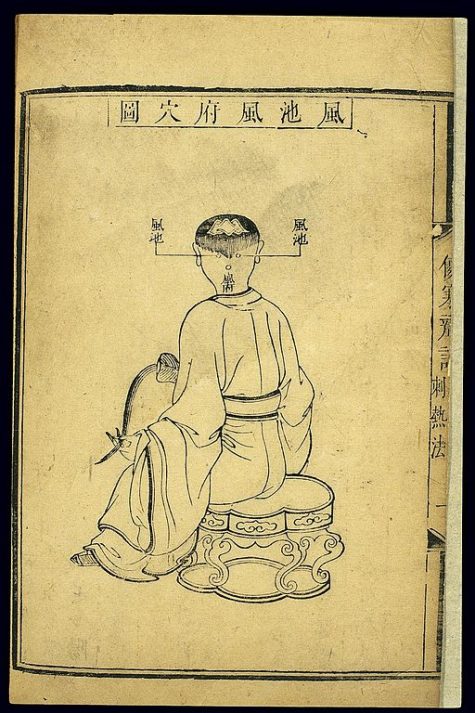
Usui’s five position set is based solidly on Traditional Chinese Medicine. The head and thorax are the 5 positions treated followed by Reiji. The body is considered to be the head and torso, and all major meridians pass through the head, thus by treating the head all areas of the body and mind are treated.
Here are the five positions:
Have the person sit. They are not laying down. These 5 positions were held for about 5 to 6 minutes each.
- 1. Zento-bu
This position is at the top forward part of the head. It is specifically at the hairline. You can use the technique of Nentatsu-ho to aid in the healing by using affirmations while you use this position.
- 2. Sokuto-bu
This is the standard hand position on the side of the head. The hands are on the sides of the head (i.e., one hand on either side).
- 3. Koutou-bu
This position is where both of the hands are placed on the upper part of the back of the head. This is the area between the base of the skull (bulb) and the top of the head.
- 4. Enzui-bu
In this position, both hands are placed on the bulb of the head. This area is the occiputal area commonly taught in Takata’s teaching.
- 5. Toucho-bu
In this position, both hands are placed on the top of the head.
After these 5 are performed for about 5 minutes each (or as needed) you follow this by performing Byosen Reikian ho (focused scanning healing technique) or Reiji. Using Byosen or Reiji guides you to know where to treat next for focused healing
For my sources see: Recommended Reading
Reiki Code of Ethics
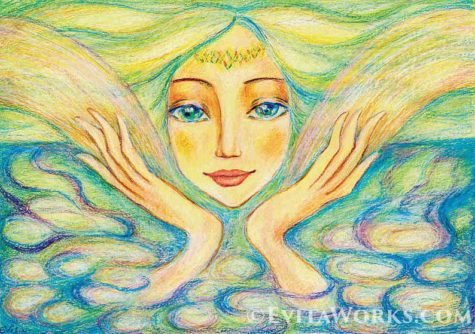
We respect an individual’s right to choose to be helped or not to be helped. This is called FREE WILL. We do not use Reiki on anyone who has not asked for it. We cannot know the soul’s purpose for that person or their higher self’s purpose. At some level conscious or subconsciously, they may not want to be helped.
There is a fine line between what is an invasion of privacy and what is not. If you feel a person needs the Reiki energy, but are not sure if that person would welcome or refuse the Reiki, you can send it via a “bubble” (see Exploring The Reiki Energy), and send it out through your High Self for the greatest good, with the clear intent that it be accepted by free will only. If the person refuses the energy, it can go instead to healing the Earth, or to someone else who wants and needs it. Unwanted Reiki energy may be recycled in this way for positive use, while still not violating another’s free will.
To force unwanted healing on anyone is totally against healer’s ethics. People and animals have the right to hold onto their dis-ease if they choose to do so.
You may set your own fee as far as “treatments” are concerned. You can do this on a donation basis as well. However, do not let the fee be a major factor in helping someone. You can trade out the treatment for something other than money. Value for value.
Remember the spiritual law: ” As you give, so shall you receive.” If you want abundance in your life, then give freely. There are times when you may only receive a hug ~ but how much is that hug worth? Your main concern is to help others whenever you can without harm to yourself.
Please remember that you cannot legally claim to be a healer. According to the rule of law, that would be “practicing medicine without a license.” Call yourself a Reiki Practitioner, Energy Facilitator, or whatever you feel is appropriate.
For my sources see: Recommended Reading
Cindy Plante: Gedoku-Ho
Gregory: Natural Power Spots
Alexander Boyd: The Seven Subtle Bodies
Alexander Boyd: The Seven Subtle Bodies
Alexander Boyd: The Seven Subtle Bodies
